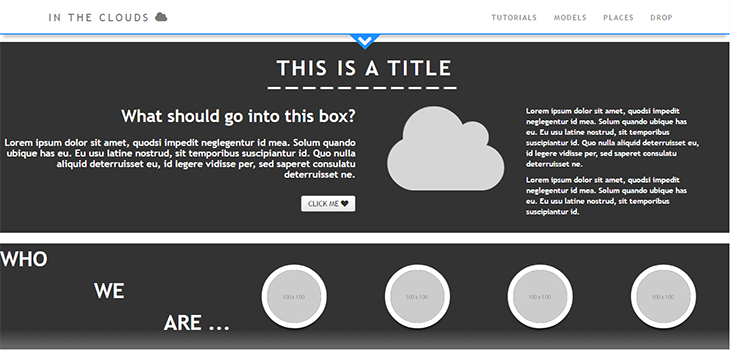

The callback is not sent any arguments, but this is set to the DOM element being animated. This can be useful for stringing different animations together in sequence. If supplied, the callback is fired once the animation is complete. More easing functions are available with the use of plug-ins, most notably the jQuery UI suite. The second click put the script on work, since it has already checked the if requirement with the first click. The only easing implementations in the jQuery library are the default, called swing, and one that progresses at a constant pace, called linear. In few words, the first click fires the if part of the function and ask is the element display property set to block and the function terminate prematurely (so to speak) since it checks correctly that query. Easing functions specify the speed at which the animation progresses at different points within the animation. The strings 'fast' and 'slow' can be supplied to indicate durations of 200 and 600 milliseconds, respectively.Īs of jQuery 1.4.3, an optional string naming an easing function may be used. If you are using jQuery then it is pretty easy. this this source you can find client id for each record, which should be some sort of sequence. Click the button Toggle (Hide/Show) an Element. When these properties reach 0 after a hiding animation, the display style property is set to none to ensure that the element no longer affects the layout of the page.ĭurations are given in milliseconds higher values indicate slower animations, not faster ones. run your application -> right click on browser and select view source. Toggle between hiding and showing an element with JavaScript. toggle() method animates the width, height, and opacity of the matched elements simultaneously. When a duration, a plain object, or a single "complete" function is provided.

Note: Hidden elements will not be displayed at all (no longer affects the layout of the page). hide () is run if an element is visible - This creates a toggle effect. Develop smarter with the visual UI Editor, IDE, JavaScript, Velo APIs and more.
#Toggle showhide professional
Velo brings together the tools you need to create professional web apps, faster.
#Toggle showhide how to
This method checks the selected elements for visibility. By clicking the button details will show from the toggle button, how to apply corvid coding. If an element has a display value of inline, then is hidden and shown, it will once again be displayed inline. The toggle () method toggles between hide () and show () for the selected elements. The display property is saved and restored as needed. Shown elements are hidden and hidden elements are shown. Was wondering if anyone had any codes or OOTB solutions for me to easily have a div show/hide content within SharePoint webpages Thanks so much. If the element is initially displayed, it will be hidden if hidden, it will be shown. You can also toggle between hiding and showing an element with the toggle() method. Hi I'm a beginner at coding/java and jquery. Currently, when I set the state of the showHide and pass into the Input field component via props, it toggles all the tooltip. OnFocus I want to toggle a child of Inputfield(InputFieldToolTip component) to show/hide from a method in the parent component. When I was entry level developer, I faced a lot of difficulties but somehow I almost covered the hard path and today sharing them in easy language.The matched elements will be revealed or hidden immediately, with no animation, by changing the CSS display property. I have a Parent component that has multiple input fields (InputField child component).
#Toggle showhide code
I also added the same code in each step because sometime entry level developer face problem in understanding. This helps entry level developer a lot in understanding. I tried to break it into the small parts and tried to add some code in each step. I hope you got the complete logic and implementation. Import 'package:flutter/material.dart' class LoginForm extends StatefulWidget Conclusion #


 0 kommentar(er)
0 kommentar(er)
